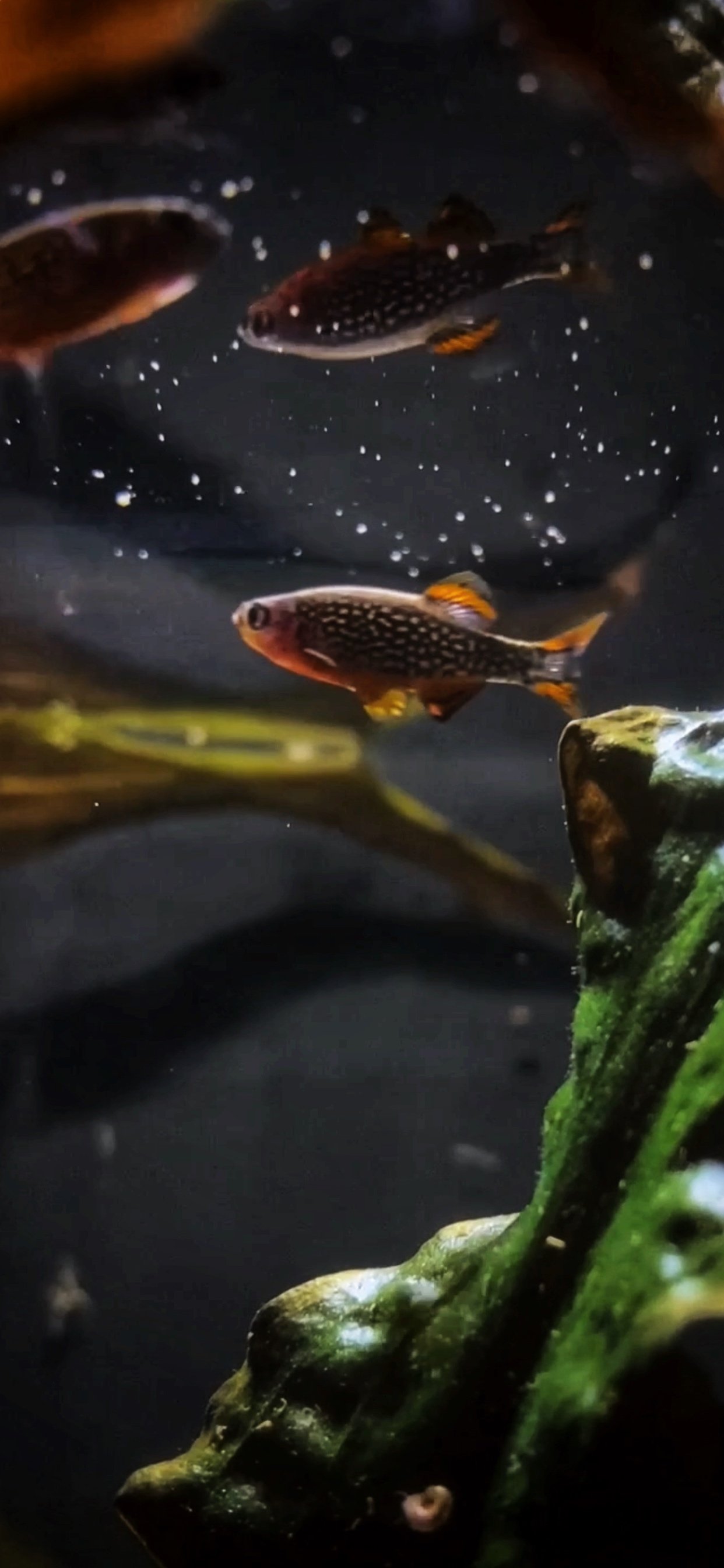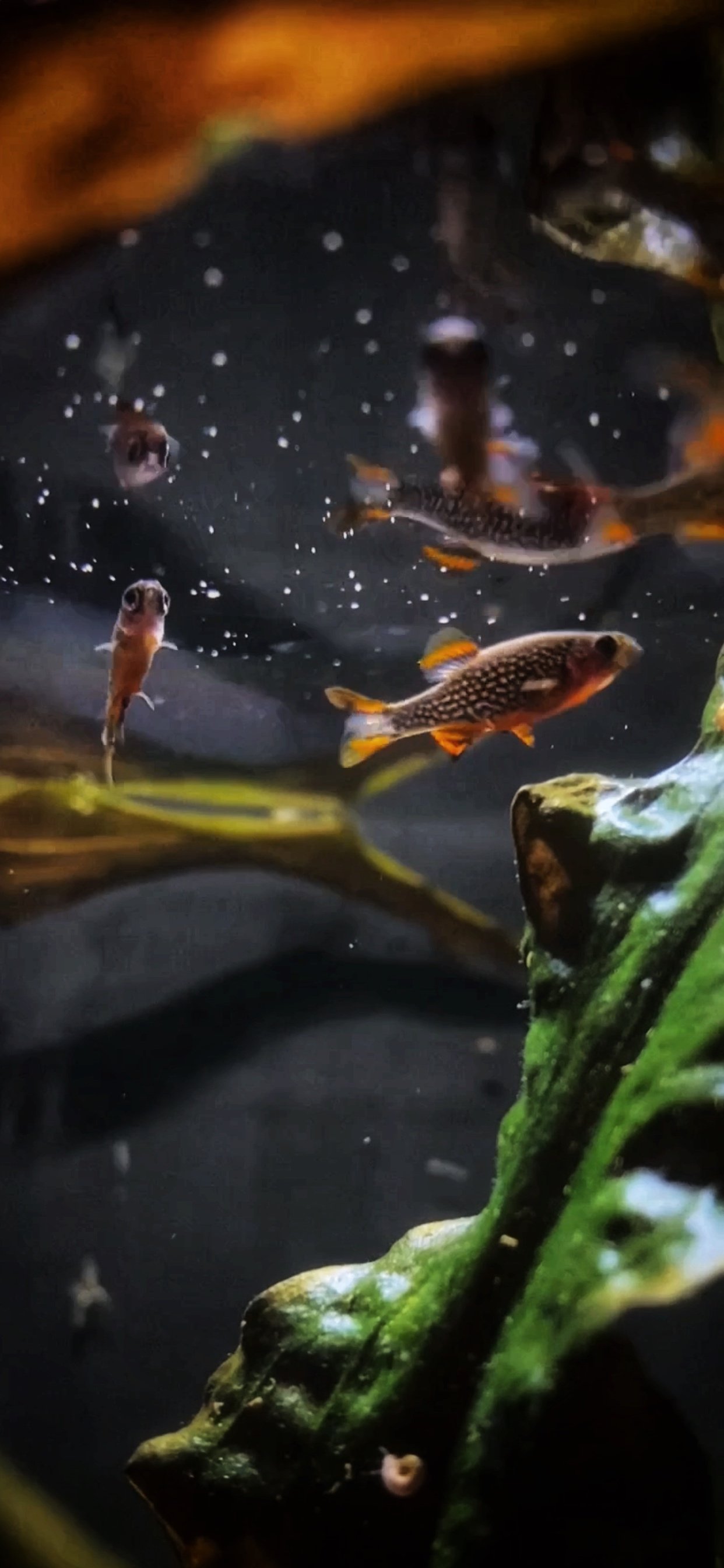Expanded fish care
Celestial Pearl Danio(cpd’s)- Galaxy Rasbora
Kingdom: Animalia
Phylum: Chordata
Class: Actinopterygii
Order: Cypriniformes
Family: Cyprinidae
Subfamily: Danioninae
Genus: Danio
Species: Danio margaritatus
Care level- Moderate-Experienced
Temperament and Behavior- Celestial Pearl Danios are gorgeous, considering their size. Yet, another characteristic they are known for is their shyness. I highly recommend keeping, and possibly breeding this nano fish. However, they are generally reluctant to come out when trying to view them. They will cluster together in a corner, a dark spot in the aquarium, in a safe area. However, some may not be as shy, and it is dependent on the group or other species in the aquarium. The small group I keep is not reluctant to come to the surface, readily waiting for food. They are in a heavily planted, species-only tank. I believe this helps due to having no threat. They are speedy, swift, and agile swimmers. If you have a group in an aquarium that is still shy, you might try a Dither Fish, a non-aggressive fish that will show the CPDs they are safe to swim around the aquarium.
Lifespan- 1-5 years
Size- 1 inch
Diet- Omnivore
Minimum Tank size -10 gallon
pH- 6.8-7.8
Minimum Tank size Water Hardness- Hard Water
Temperature-73-79 degrees Fahrenheit
Tank-mates- The only tank-mate I tried with the Celestial Pearl Danios were Neocaridina Shrimp. I find myself lucky that my Celestial Pearl Danios actively come out and swam around the aquarium. However, these are small but extremely beautiful fish that are known for shyness and tend to hide. If you have a problem with shyness, people have given me this advice more than once. Try to add a "Dither Fish," meaning a fish that will be safe to put into the tank and have no threat to the CPDs. The reasoning is that this will make the CPDs more secure to come out, and explore the fish tank. Try tank-mates with a friendly personality and a similar small body structure. I have great luck with Neocaridina Shrimp, but you could try Neon Tetra, Guppies, Rasboras, or White Cloud Minnows.
Recommended Group Size- I would highly recommend having at least a small group of 4 or 5, especially if you would like to breed to help guarantee a few males and females. However, I would suggest you get as many as you can. My suggestion is to purchase the most significant number you can. They will no doubt only benefit from a larger group. CPDs seem to shoal, they tend to stick together, but they act independently. Instead of working as one in schooling behavior.
Tank Setup- Celestial Pearl Danios benefit from being in a heavily planted environment. This fish species is relatively small compared to most fish and is excellent for smaller aquariums to larger aquariums. Since CPDs do well in a planted tank, use substrates that enhance your live plants. I use a mix of sand, gravel, and Fluval Stratum for an aquarium substrate. Another benefit to CPDs is driftwood, and leaf litter, I recommend Catappa leaves.
Males v. Females- There is sexual dimorphism between males and females, meaning you can see a difference between the two. You will have to look closely. At first glance, they have similar coloration. However, the males will have a more vibrant blue and brighter orange on their tails upon closer inspection. Females have the same coloration, just not as pronounced. Males seem to try to attract females and enjoy plenty of places to hide.
Breeding- Celestial Pearl Danios are egg scatterers and will take advantage of aquarium plants. CPDs seem to eat their eggs. Suppose you want to breed them and keep their fry. Typically, you will see eggs stuck to the plants, it is easiest to move the plant into another aquarium. Try using spawning mops or floating plants. I recommend that you allow them to hatch and grow in their own aquarium. Eggs seem only to take a handful of days to hatch and be free swimming. At the beginning of life, CPDs are incredibly tiny and will need an especially small diet.



